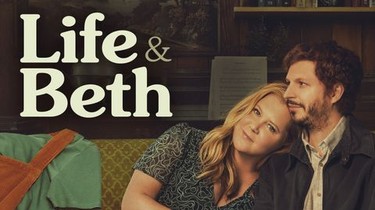Features
Girls and Their Gaming Consoles
By: Amanda Radley
You need look no further than the video game charts for an indication of how masculine the industry is. Of the top twenty video games as of today, nineteen of them show men on the cover. That’s right, one shows a woman. She’s in the background, dancing like a lunatic. The others aren’t just men; they are manly men. Men looking gritty and determined, often with ridiculously large amounts of weaponry. Finding a video game with a female lead is about as rare as finding your finicky father the perfect Christmas present. And let’s not even go into the minefield of seeking out a game with characters of colour, LGBT+ or other minorities. From conception to marketing, video games are overwhelmingly created for men.
You’d be hard pressed to convince me that there a more stress-relieving activity than grappling from building to building while advising my cat that, “I’m Batman.” No, I’m not a caped vigilante by night, I am in fact a gamer. Surprisingly, as a woman, I am not in the minority. According to PewResearchCenter, recent studies have shown that more women than men play games. 52% of the gaming audience identify as female. However, it’s easy to see that the gaming sector, specifically the multi-billion-dollar video gaming sector, is overwhelming dominated by men.
Just the other day I was looking at video games in a popular gaming store in the UK. I was approached by a member of staff and asked if I was looking for a Christmas present for someone. Because why would I, a woman, be looking at Xbox One video games? Either I got lost on my way to the hairdressers or I was buying for someone else, obviously.
Walking out wasn’t hard as I hadn’t seen a game I’d like to purchase anyway. Not that I’m overly girlie, I have a masculine side, but I’ve been known to put up shelves and one of them stayed up longer than a month. Yet I have little interest in going to war, murdering people, playing football, managing football teams or fighting zombies. Okay, that last one is a lie. I love a good zombie game, but only in the middle of the day with lots of company.
Of course, I play dark, masculine games like Batman, Fallout and Bioshock, but that’s mainly because I don’t feel I have much choice in the matter – a shame because video games are undeniably beautiful and immerse pieces of artwork. These days a video game is as big a production as a movie. But like Hollywood, it does struggle to be inclusive to everyone.
Let’s say as a woman you do manage to get your hands on a game that you want to play, beware of the new drive to make more games co-operative multiplayer because then you run the risk of having to speak with other gamers, often men. And the cute username that you set up thinking it would be fun isn’t going to fly when you’re trying to play Call of Duty. Asking to join a co-op death match when you’re called “PrincessBangBang” isn’t going to make you any friends. In fact, it’s going to ensure that your own team mates shoot you in the back at every opportunity.
I remember the good old days of Medal of Honor. Not the machismo injected one of recent times, I’m talking about the Airborne version from 2007. I spent many an hour playing online, happily gunning down Nazis as they parachuted into a French village. Ah, 2007. Do you remember the good old days when games used these villains as their token bad guys? Some of the players had headsets, but Internet speeds were slow and voice lagged so it was acceptable to remain silent. That way only I knew that I, a mere woman, was playing and occasionally winning while giggling manically as I gunned down other players as I waited for my toenail varnish to dry.
There has also been much said about bullying in video games, predominately women gamers being heckled or even threatened by men. Personally, I’ve thankfully not been a victim of this behavior, but I can absolutely believe it happens. Not that I think male video gamers are solely to blame. The anonymity provided us by the Internet turns many people into mouthy bigots, but that’s a whole other article.
It may also be of interest to note that while it may be no surprise most the women gamers are playing games on their smartphone, often puzzles, trivia and word games. This statistic is often followed by the cry that those kinds of games are not “real,” but the truth is that the mobile gaming market is worth $25 billion a year, growing at an enormous rate annually. Yet it’s not just women playing these mobile games. In fact, according to Magmic Inc, 78% of Bejeweled Blitz players are women while 77% of Clash of Clans players are men. And the famous Candy Crush splits usage almost down the middle with a surprising 45% of the audience being men.
It’s becoming clear that women enjoy playing games. In a recent study in the US, it was found that more women than men owned a video games console. However, with video games consoles doing so much more than just playing games, the question is how often do they get used to play games? I’m sure the video game industry would say that they make games for men, based upon the fact that mainly men play video games, but that’s a little bit like the local authority saying that they won’t build a swimming pool because no one is swimming in a puddle to prove its necessity.
With the average video game costing between $15-$60 million to create, surely there is some budget to work with? Would asking a woman’s point of view be too much to ask? Maybe try putting in a female lead with actual clothes and not just a bikini or hot pants? After all, we do game more and we do own more of the consoles.
People are quick to point out the new trend of being able to design your character and even being able to choose a female lead. While this is great, and definitely a step in the right direction, it’s not enough. Often these games are extremely masculine in nature and simply allow a player to choose a male or female lead with no other discernible changes in the gameplay.
Of course, when you mention female leads in games you are invariably pointed towards Lara Croft and the Tomb Raider series. Lara has been around for many years and the first incarnation seemed to be more an object of sexual male pleasure than female empowerment. Yes, she’s athletic, intelligent and kills bad guys in an acrobatic hail of bullets yet she’s also got breasts that could smother an entire nation if she were to fall. Lara Croft made 1960s Barbie’s proportions look realistic. If Amy Schumer can be cast in the upcoming Barbie movie, surely Lara can get a makeover as well.
Gaming studios are very quick to boast about their technological advances in game play and design. From hyper-realistic lighting techniques to natural cloud movements, design in games is becoming so lifelike it is sometimes hard to tell computer generated imagery from real-life. So, why is it so difficult for some game designers to accurately portray an average female body?
In the 2013 video game reboot, Lara was given an overhaul and her body style started to look a little more like a human female. However, she still didn’t have the support bra forged from solid steel that she would need in order perform her backflips without giving herself two black eyes. Angelina Jolie played Lara in the films, but in actuality there would never be a real-life woman who could live up to Lara’s video game measurements.
Despite her faults, Tomb Raider is indeed an example of a video game with a female lead. In fact, it even passes the Bechdel Test. For those who don’t know it by name, the Bechdel Test is a assessment applied to all forms of fiction including movies, television and video games. In order to pass, the work must contain at least two women who talk to each other about something other than a man – something Lara did, at least in the rebooted versions.
So, congratulations are in order for Lara. But how can the multi-million-dollar Tomb Raider universe be the only example we have in amongst thousands of other titles? I’ve been pleased to see a huge advertising push for Dishonored 2, which does have a female lead. I’ve yet to play, but I have heard great things. So, let’s see what happens when I attempt to head into a gaming store to buy it. I hope this time the sales associate will treat me as a serious gamer rather than just a game giver.





You must be logged in to post a comment Login